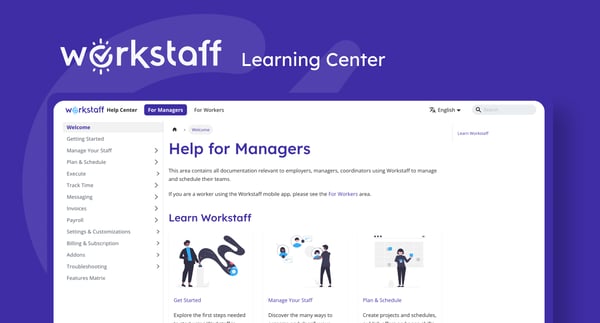It’s no secret that staff retention is one of the most efficient ways to build and maintain a strong workforce. Retaining talented employees is crucial for the success of any organization, and unsurprisingly a high staff turnover can lead to increased recruitment costs, decreased productivity, and a negative impact on company culture. To maintain a stable and engaged workforce, companies must implement strategies beyond financial incentives to ensure their best employees stay motivated and committed. Here are nine effective ways for companies to improve staff retention.
Thorough Candidate Screening and Matching
One of the first steps in improving staff retention is selecting the right candidates from the start. Effective screening processes, including skill assessments and cultural fit evaluations, can help identify individuals who align with the organization's values and long-term goals. When new employees feel a sense of belonging and purpose, they are more likely to stay committed to a company.
By Setting Clear Expectations and Onboarding Process
Setting clear expectations from the outset is vital in retaining employees. During onboarding, new hires should be provided with a detailed overview of their roles, responsibilities, and performance expectations. By implementing an effective onboarding program and using a comprehensive staff management program helps new employees integrate smoothly into the organization, reducing feelings of uncertainty, confusion, and increasing job satisfaction. Managers should also allocate time to support new staff, ensuring they feel valued and confident in their positions.
By Offering Competitive Compensation and Benefits
While money might not be the sole driver of staff retention, the truth is that it remains a significant factor in retaining a strong workforce. To keep employees engaged and satisfied, businesses must offer competitive compensation packages and comprehensive benefits. They should conduct regular salary reviews to ensure wages are in line with industry standards, and provide perks such as healthcare, retirement plans, continuous learning and wellness programs. These offerings demonstrate that the company values its employees and their overall well-being.
Providing Professional Development and Training Opportunities
Investing in employee growth and development is a powerful tool for staff retention. Providing access to relevant training, workshops, and seminars encourages staff workers to pursue personal and professional growth development within the organization. Ambitious employees thrive on bettering themselves and are more likely to stay engaged and committed when they see a clear path for advancement and improvement. Additionally, nurturing talent from within creates a sense of loyalty and inspires staff to envision a long-term future with the company.
Creating a Supportive Work Culture and Engagement
Positive work culture plays a critical role in retaining staff. Companies should encourage open communication, collaboration, and recognition of achievement to foster a supportive environment where employees feel valued and appreciated for their contributions. Regularly seeking feedback from staff and implementing their ideas for improvement can create an environment where everyone matters and that all opinions are welcomed. By creating a workplace that prioritizes employee well-being and engagement, an organization can foster a sense of loyalty among its team members.
Building Strong Client Relationships and Support
When employees have a sense of pride in the products or services they provide, they are more likely to stay loyal to the organization. Companies should encourage interactions with clients to understand their needs better and deliver exceptional customer support. This connection can reinforce the significance of an employee's role in fulfilling the company's mission, resulting in higher job satisfaction and retention rates.
Implementing Effective Communication Channels
Transparent and open communication is essential for fostering a positive work environment. Organizations should regularly communicate company updates, changes, and future plans to keep employees informed and engaged. They should encourage feedback and suggestions from staff through various channels such as surveys, suggestion boxes, or town hall meetings. When employees feel their voices are heard and valued, they are more likely to remain committed to the organization.
Promoting Flexibility and Work-Life Balance
Promoting work-life balance and offering flexible work arrangements can boost staff morale and have a significant positive impact on staff retention. Companies should encourage employees to manage their time effectively, offer work-from-home opportunities, avoid overworking and take advantage of paid time off. While not all jobs can be performed remotely, offering employees flexible hours can help them better juggle their personal and professional lives, reducing burnout and enhancing job satisfaction.
Conducting Exit Interviews For Continuous Improvement
Although it may sound counterintuitive in the context of staff retention, when employees decide to leave, conducting thorough exit interviews can provide companies with valuable insights into potential areas for improvement. Identifying patterns and addressing issues raised by departing employees allows companies to implement changes that benefit current and future staff. By continuously striving to improve the workplace based on employee feedback, an organization can create a more desirable and nurturing environment, increasing the likelihood of retaining top talent. Improving staff retention requires a multi-faceted approach that encompasses every aspect of the employee experience. Each strategy plays a crucial role in fostering a loyal and engaged workforce, from selecting the right candidates to promoting work-life balance and utilizing exit interviews. By investing in employees' professional growth, prioritizing a supportive culture, and maintaining effective communication channels, organizations can build an environment where employees thrive and are inspired to remain committed for the long term. Building such a workplace is essential for sustained success in today's competitive business landscape.







